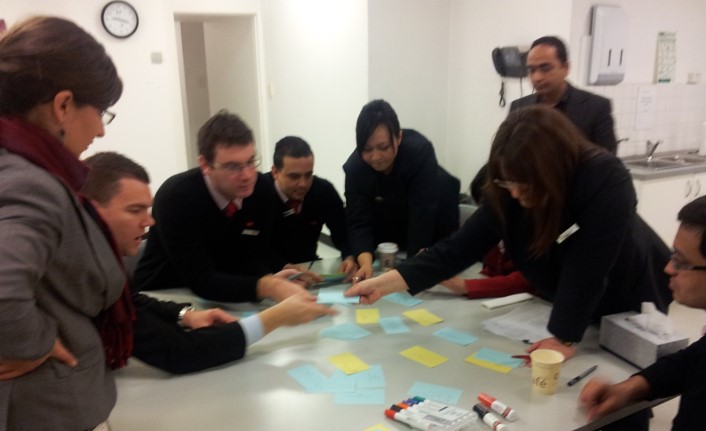Case Study - Mobile optimised site
I was engaged by Westpac (the third largest bank in Australia) to create a simple, intuitive, and elegant banking experience.
Background
Westpac did not have a mobile banking offering. This was unacceptable to their existing customers, and an oversight that impacted new customer acquisition.
My task was to research what Westpac customers actually needed from the bank when they approached the bank via their mobile channels. Once research was synthesised, I was then tasked with providing design solutions that would meet the needs of customers and improve customer acquisition.
Approach
I had full responsibility over the time, budget and implementation of the project.
- Investigate and analyse the identified targeted customer segments.
- Implement an agile project methodology to ensure that design artefacts could be delivered on time and under budget.
- Present research findings and design solutions to senior stakeholders at key milestones in the project.
- Organise, plan and conduct testing of the new information architecture, content strategy with actual users.
- Iterate, iterate, iterate based on research results.
- Apply visual design to the prototype within the constraints of the Westpac global style guide.
- Handover to development team and provide support throughout implementation.
Challenges
A very diverse group of senior stakeholders within Westpac were appointed as final decision makers on this project. This created some challenges:
- The project was time boxed and this applied pressure that would mean project decisions needed to be made very quickly. With an immovable launch date, it was crucial to ensure that all decision makers were informed ahead of time so that changes could be made before it was too late. Like any large organisation, getting the key players into a room was a challenge unto itself, let alone trying to help those disparate executives to come to a unified agreement.
- Due to the different backgrounds and roles of the decision makers, their goals were diverse and often at odds with each other. These challenges further validated my view that decisions based on research and test data were the easiest to get agreement on, and therefore were the most important. This scientific approach ensured my success on the project as it eliminated guesswork, and clearly helped the project team make informed decisions on behalf of customers.
Research
Who are the users?
Goal: Prioritise personas and select targeted groups
Activity: Review of research documents and standards. Brainstorming with UX designer of other projects within Westpac and strategic decision makers
What are the user needs?
Goal: Investigate behaviour of targeted user groups interacting with banks on their mobile devices
Activity: Workshops with bankers that speak with the customers on a daily basis
How could the product be used?
Goal: Learn about how and when the product could help the user and find a useful navigation structure
Activity: Card sorting workshops with representatives of targeted user groups
Analysis
Why will the customer use the product?
Goal: Understanding the product and service interactions from users’ point of view across different touch points and within the entire product offering.
Deliverable: Customer journey for each scenario
How will the customer use the product?
Goal: Communicating the end to end experience with the future product and building empathy. Identifying possible inconsistencies.
Deliverable: Experience map for each customer journey
What is required to build a coherent experience?
Goal: Planning necessary components for the product
Deliverable: Interaction flow
Creation and Testing
Navigation
I created and tested two options for the navigation with different groupings and labels.












